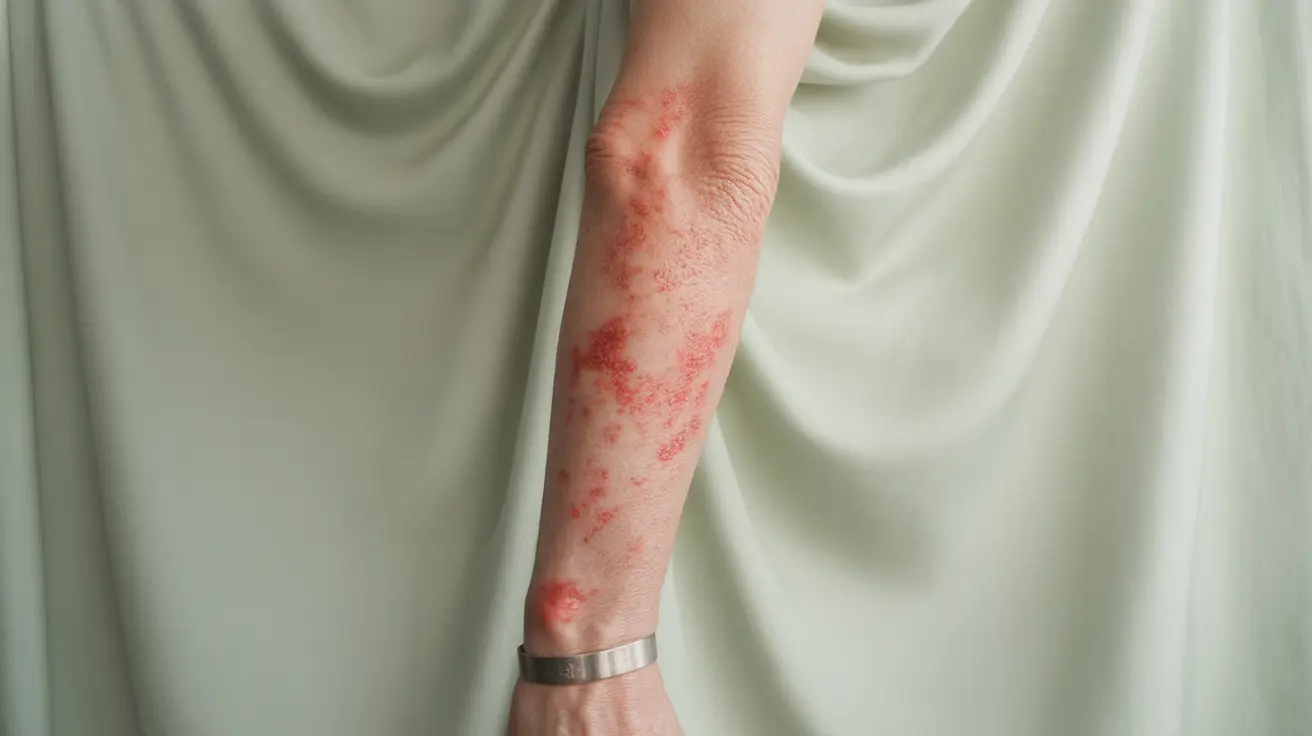Red skin syndrome (RSS), also known as topical steroid withdrawal syndrome, is a challenging condition that can develop after prolonged use of topical corticosteroids. This condition affects individuals who have used steroid creams or ointments, particularly for skin conditions like eczema or dermatitis. Understanding its symptoms, diagnosis, and management is crucial for both prevention and recovery.
While topical steroids are effective treatments for many skin conditions, their long-term use can lead to dependency and subsequent withdrawal symptoms when discontinued. This comprehensive guide will explore the key aspects of red skin syndrome and provide evidence-based information for those affected by or concerned about this condition.
Understanding the Symptoms of Red Skin Syndrome
Red skin syndrome presents with distinct symptoms that often appear after stopping topical steroid use. Common symptoms include:
- Intense redness and burning of the skin
- Severe itching and discomfort
- Flaking or peeling skin
- Swelling and inflammation
- Oozing or weeping skin
- Temperature regulation issues
- Skin sensitivity to various products
These symptoms can appear on areas where steroids were previously applied and may spread to other parts of the body. The intensity of symptoms can vary significantly among individuals.
Diagnosis and Clinical Assessment
Diagnosing red skin syndrome requires careful evaluation by healthcare professionals. The diagnosis process typically involves:
- Detailed medical history review
- Assessment of previous steroid use patterns
- Physical examination of affected skin areas
- Ruling out other skin conditions
- Evaluation of symptom progression
Healthcare providers often look for specific patterns, such as symptoms worsening after steroid discontinuation and the characteristic "rebound effect" where skin problems become more severe than the original condition.
Treatment Approaches and Management Strategies
Managing red skin syndrome primarily focuses on supporting the skin's natural healing process after discontinuing topical steroids. Key treatment strategies include:
Immediate Care Measures
- Gentle skincare routine
- Avoiding harsh products and irritants
- Maintaining proper moisture balance
- Temperature management for comfort
Long-term Management
Long-term management strategies focus on supporting the healing process and preventing complications:
- Implementing a consistent skincare routine
- Using appropriate moisturizers
- Avoiding trigger factors
- Supporting the immune system through proper nutrition
- Stress management techniques
Recovery Timeline and Expectations
The recovery process from red skin syndrome varies significantly among individuals. Some may experience improvement within months, while others may need a year or longer for complete recovery. Factors affecting recovery time include:
- Duration of previous steroid use
- Strength of steroids used
- Individual skin healing capacity
- Overall health status
- Adherence to treatment protocol
Prevention and Safe Steroid Use
Preventing red skin syndrome involves careful consideration of topical steroid use:
- Following prescribed usage guidelines
- Regular consultation with healthcare providers
- Using the minimum effective strength
- Implementing "steroid holidays" when appropriate
- Exploring alternative treatment options
Frequently Asked Questions
What are the common symptoms of red skin syndrome caused by topical steroid use?
Common symptoms include intense redness, burning sensation, severe itching, skin flaking, and inflammation. Patients may also experience temperature regulation issues and increased sensitivity to skincare products.
How is red skin syndrome (topical steroid withdrawal) diagnosed and distinguished from eczema flare-ups?
Diagnosis involves reviewing medical history, particularly steroid use patterns, and observing symptom progression after steroid discontinuation. Unlike eczema flare-ups, RSS symptoms typically worsen after stopping steroids and may affect areas beyond the original treatment sites.
What treatments and home remedies can help manage symptoms of red skin syndrome?
Management focuses on supporting natural skin healing through gentle skincare, appropriate moisturization, avoiding triggers, and maintaining optimal environmental conditions. Some find relief through cool compresses, natural moisturizers, and stress reduction techniques.
How long does it take for red skin syndrome symptoms to improve after stopping topical steroids?
Recovery time varies significantly, ranging from several months to over a year. The duration depends on factors such as previous steroid use length, strength of steroids used, and individual healing capacity.
How can red skin syndrome be prevented when using topical corticosteroid creams?
Prevention strategies include using the lowest effective steroid strength, following prescribed guidelines, taking regular breaks from steroid use, and maintaining regular communication with healthcare providers about treatment plans and alternatives.




